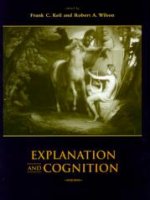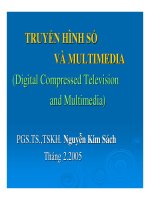The MIT Press Modernity and Technolog phần 1 ppsx
Bạn đang xem bản rút gọn của tài liệu. Xem và tải ngay bản đầy đủ của tài liệu tại đây (817.42 KB, 44 trang )
Md. Dalim #661345 11/02/02 Blue Black
Modernity and Technology
6641 FM UG 9/12/02 5:38 PM Page i
6641 FM UG 9/12/02 5:38 PM Page ii
This Page Intentionally Left Blank
Modernity and Technology
edited by
Thomas J. Misa, Philip Brey, and Andrew Feenberg
The MIT Press
Cambridge, Massachusetts
London, England
6641 FM UG 9/12/02 5:38 PM Page iii
©2003 Massachusetts Institute of Technology
All rights reserved. No part of this book may be reproduced in any
form by any electronic or mechanical means (including photocopying,
recording, or information storage and retrieval) without permission
in writing from the publisher.
This book was set in Sabon by UG / GGS Information Services.
Printed and bound in the United States of America.
Library of Congress Cataloging-in-Publication Data
Modernity and technology / edited by Thomas J. Misa, Philip Brey,
and Andrew Feenberg.
p. cm
ISBN 0-262-13421-7 (hc. : alk. paper)
1. Technology—Social aspects. I. Misa, Thomas J. II. Brey, Philip.
III. Feenberg, Andrew.
T14.5 .M63 2003
303.48Ј3—dc21 2002071754
10987654321
6641 FM UG 9/12/02 5:38 PM Page iv
Contents
Acknowledgments vii
Workshop Participants ix
1 The Compelling Tangle of Modernity and Technology 1
Thomas J. Misa
I Modernity Theory and Technology Studies
2 Theorizing Modernity and Technology 33
Philip Brey
3 Modernity Theory and Technology Studies: Reflections on Bridging
the Gap 73
Andrew Feenberg
4 Critical Theory, Feminist Theory, and Technology Studies 105
Barbara L. Marshall
II Technologies of Modernity
5 Modernity under Construction: Building the Internet in
Trinidad 139
Don Slater
6 Surveillance Technology and Surveillance Society 161
David Lyon
7 Infrastructure and Modernity: Force, Time, and Social Organization
in the History of Sociotechnical Systems 185
Paul N. Edwards
6641 FM UG 9/12/02 5:38 PM Page v
vi Contents
8 Creativity of Technology: An Origin of Modernity? 227
Junichi Murata
III Changing Modernist Regimes
9 The Contested Rise of a Modernist Technology Politics 257
Johan Schot
10 Technology, Medicine, and Modernity: The Problem of
Alternatives 279
David Hess
11 The Environmental Transformation of the Modern Order 303
Arthur P. J. Mol
12 Technology, Modernity, and Development: Creating Social
Capabilities in a POLIS 327
Haider A. Khan
13 Modernity and Technology—An Afterword 359
Arie Rip
References 373
About the Authors 409
Index 413
6641 FM UG 9/12/02 5:38 PM Page vi
Acknowledgments
The volume draws on an international workshop held at the University
of Twente in the Netherlands in November 1999, which brought to-
gether a diverse group of scholars from the communities of modernity
studies (philosophy, cultural studies, and social theory) and technology
studies (history, sociology, anthropology); see Ͻwww.iit.edu/~misa/
twente/Ͼ. This workshop was made possible by financial support from
the U.S. National Science Foundation (grant SES-9900894), the Univer-
sity of Twente, and the Dutch Graduate School for Science, Technology
and Modern Culture (WTMC). Our collective efforts to understand
technology and modernity go back to a seminar series that Pieter
Tijmes, Johan Schot, and Tom Misa organized at Twente in the spring
of 1997.
At Twente we would especially like to thank Gerdien Linde-de Ruiter
for a thousand small acts of kindness and assistance in planning and
preparing the workshop, as well as the friendly and expert assistance of
Femke Merkx in conducting the workshop. Many workshop partici-
pants freely shared their own ongoing research and reflections, giving
our authors invaluable insights.
6641 FM UG 9/12/02 5:38 PM Page vii
6641 FM UG 9/12/02 5:38 PM Page viii6641 FM UG 9/12/02 5:38 PM Page ii
This Page Intentionally Left Blank
Workshop Participants
Hans Achterhuis (University of Twente, Netherlands)
Michael Allen (Georgia Institute of Technology, USA)
Anne Balsamo (Xerox Palo Alto Research Center, USA)
Anne-Jorun Berg (SINTEF Institute for Social Research in Industry, Norway)
Regina Lee Blaszczyk (Boston University, USA)
Philip Brey (University of Twente, Netherlands)
Nil Disco (University of Twente, Netherlands)
Paul Edwards (University of Michigan, USA)
Andrew Feenberg (San Diego State University, USA)
Hans Harbers (University of Groningen and University of Twente, Netherlands)
Mikael Hård (Technical University Darmstadt, Germany)
Gabrielle Hecht (University of Michigan, USA)
David Hess (Rensselaer Polytechnic Institute, USA)
Thomas Hughes (University of Pennsylvania, USA)
Haider Khan (University of Denver USA)
Michiel Korthals (Wageningen University, Netherlands)
Andrew Light (New York University, USA)
David Lyon (Queen’s University, Canada)
Barbara Marshall (Trent University, Canada)
Thomas Misa (Illinois Institute of Technology, USA)
Joel Mokyr (Northwestern University, USA)
Arthur Mol (Wageningen University, Netherlands)
Junichi Murata (University of Tokyo, Japan)
David Nye (Odense University, Denmark)
Johan Schot (University of Twente, Netherlands)
Don Slater (London School of Economics, United Kingdom)
Pieter Tijmes (University of Twente, Netherlands)
Ulrich Wengenroth (München University of Technology, Germany
)
6641 FM UG 9/12/02 5:38 PM Page ix
6641 FM UG 9/12/02 5:38 PM Page x6641 FM UG 9/12/02 5:38 PM Page ii
This Page Intentionally Left Blank
Modernity and Technology
6641 FM UG 9/12/02 5:38 PM Page xi
Schiphol Airport, November 21, 1999. I’m checking in, heading home,
answering questions. “Please step this way, I have a few things to ask you. . . .
Did you pack your own bags this morning? Has a stranger given you anything
to carry? Where were you staying in the Netherlands? I do need to see your
passport.” I decide to give straight answers, even if the smiling young woman—
officially, I suppose, with the full power of the Dutch nation-state behind her—
soon enough goes way beyond the script of ensuring safe travel. “How many
days did you stay? What were you doing here?” Stay calm, I think. This is no
concrete-and-barbed-wire interrogation, even if she still has my passport. I’m on
friendly and familiar terrain. Schiphol is an unmistakably human-made space,
beautiful in its way. Bright painted steel-framed ceilings high overhead, a wall of
windows spotless as only the Dutch can make them, the quiet hum of air condi-
tioning, the periodic clunk of baggage conveyors, the pleasant babble of a thou-
sand people on their journeys. Five minutes ago I arrived on a sleek electric
train, whose bulb-nosed profile still calls to mind the classic shape of a Boeing
747. So Claire’s next question—I’ve sneaked a peak at her name tag—takes me
off-guard. “This workshop you were at, I don’t understand, what exactly do
you mean by ‘modern’ and ‘technology’?” Well, I say, look around you.
Is there anything more assertively modern and more thoroughly techno-
logical than an airport? Airports—we might equally think of harbors,
subways, skyscrapers, automobiles, telephones, or the Internet—are
deeply implicated in the social and cultural formations deemed “modern”
by the founding fathers of social theory. Can you imagine an anthropolo-
gist of any “traditional” society doing his or her fieldwork on some exotic
ritual in which 300 strangers willingly line up to be crowded into a nar-
row cylinder-shaped space, placed in seats so close their shoulders touch,
and strapped down for hours on end? And they pay for this privilege!
Yet the airport ritual is a common experience of contemporary life,
and more to the point, it embodies and enacts certain key features of
1
The Compelling Tangle of Modernity and
Technology
Thomas J. Misa
6641 CH01 UG 9/12/02 5:42 PM Page 1
2 Thomas J. Misa
modernity. It is not that airports are “new.” Airports provide a techno-
logically mediated instance of the increased interpersonal contact and
communication that Emile Durkheim deemed characteristic of modern
society. For his contemporary Max Weber, increasing rationalization
characterized modern society. Weber’s observations on German civil
servants ring surprisingly true for airports.
1
Any sizable airport in the
world has check-in counters, boarding passes, security and surveillance
systems, indexical location schemes, English-language signs, and a high
degree of time consciousness. Checking in at Portland, Oregon, one
learns that Lagos, Nigeria, has failed its international safety inspection.
The sign might as well say: you are entering a space of global standards.
As theorists of modernity, Marx and Engels shared with Weber a
faith in the rationalization of society (in the sense of technological
“progress” as well as growing social awareness of the process of
change). Yet even though they misread the capacity of capitalism to
avoid the cataclysms of revolution, Marx and Engels grasped the crucial
point that modern economies, societies, and cultures are fundamentally
about unremitting and unceasing change—in their memorable image,
“all that is solid melts into air.”
2
This insight historicizes the “great di-
vide” that theorists from Francis Bacon forward to Bruno Latour (1993)
have used to separate the modern world from the premodern world that
it supposedly supplanted.
3
If you accept the divide and the terms used to
describe it—traditional and modern, Gemeinschaft and Gesellschaft,
lifeworld and system, Self and Net—you cannot help but put airports on
the “modern” side.
4
“Those marvelous flights which furrow our skies”
were among the soul-inspiring “tangible miracles of contemporary life”
identified and celebrated by the Italian Futurists, the primordial theo-
rists of aesthetic modernism.
5
Not bad for a painters’ manifesto penned
within a year of Louis Blériot’s first cross-channel flight in 1909.
If one goal of this volume is to examine modernist icons such as
airports, harbors, train stations, mechanical clocks, automobiles, phar-
maceuticals, and surveillance and information technologies in the light
of social theory, another goal is to consider them at the same time
explicitly as technologies. In popular discourse technologies often ap-
pear as “black boxes,” fixed entities that irresistibly change society and
culture. However, the contributors to this volume want to understand
6641 CH01 UG 9/12/02 5:42 PM Page 2
The Compelling Tangle of Modernity and Technology 3
them instead as embodiments of human desires and ambitions, as solu-
tions to complex problems, and as interacting networks and systems.
Social theories that assume static categories of “technology” and “soci-
ety” or that presume technologies are always coercive structures are of
scant help.
6
Technologies interact deeply with society and culture, but
the interactions involve mutual influence, substantial uncertainty, and
historical ambiguity, eliciting resistance, accommodation, acceptance,
and even enthusiasm. In an effort to capture these fluid relations, we
adopt the notion of co-construction.
7
In compelling ways, airports combine transportation, production, and
consumption, activities that we usually think of as being conducted in
railroads, factories, and stores.
8
Think for a moment of your favorite air-
port not merely as a way of leaving town but as a rational factory with
countercurrent flows of raw materials and products: departing and arriv-
ing passengers; food, beverages, and lavatory waste; jet fuel and pollu-
tion. Airports are in fact not only the location of electrical systems,
ventilating systems, water systems, and communication systems, among
others; they are also nodes in road and rail networks. Airports are created
by, and in their day-to-day functioning depend on, the integration of
these numerous systems. They are “systems of systems” or, as some theo-
rists put it, second-order technological systems (Braun and Joerges 1994).
Solutions to the unique spatial problems of airports and other systems
of systems often take novel forms and entail social and cultural changes.
Sometimes what is important is a physical coupling of technologies; you
can see this in the invention of jetways, which bridge the dangerous
space between the check-in counter and the airplane’s door, and which
emerged at Amsterdam’s Schiphol and Chicago’s O’Hare airports
around 1960. Equally important are the nonphysical couplings that
occur through a welter of communication and control systems guiding
the flow of passengers, ground traffic, and airplanes. One might say, on
an abstract level, that airports process information.
9
Recently, as more
and more airports have become display sites for luxury goods, they have
displaced the shop windows of the metropolis and serve as a new site of
modernism as consumption.
These transport, communication, and merchandising technologies have
created a “modern” experience, and they serve as one long argument for
6641 CH01 UG 9/12/02 5:42 PM Page 3
4 Thomas J. Misa
a technological framing of modernity. Airport authorities, like railroad
companies before them, seem to understand their culture-making power
intuitively and act on it instrumentally. The experience they create is not
always, as the founders of the modern movement in architecture had
hoped, spiritually satisfying. In our own time, what better display of a
banal and homogenized global economy is there than a quick stroll
through the enticements of “airport culture”? How can you decide (even
if you are merely going to Cincinnati) between Motorola cell phones,
Komatsu earth-moving equipment, or Mannesmann engineering? Perhaps
you try to escape the blare of CNN by retreating to an authentic “local”
airport bar?
The impossibility of escaping this tangle of technology and modernity
is our volume’s point of departure.
Forget retreating to some mythical nontechnological past of small
farms and happy peasants. Modern society—whether aspiring East or
industrialized West, wealthy North or resentfully poor South—is consti-
tuted, in varied ways, through technological systems and networks.
These systems and networks not only are the “connective tissues and the
circulatory systems” of the modern economy,
10
they also constrain and
enable social and cultural formations. Birthing babies, educating chil-
dren, exercising citizenship, going to work, eating and drinking, visiting
with distant friends and family, maintaining health or combating sick-
ness, even dying—these human experiences are all mediated by technol-
ogy. We cannot responsibly escape this condition of modernity, and we
need ways to confront it constructively.
In this respect most existing approaches to the “problem of technology”
leave much to be desired. Habermas’s elegant opposition of “lifeworld”
and “system,” and the legion of philosophers, critics, and commentators
who have followed his lead, takes you straight to dead ends or to despair.
As humans we identify deeply with lifeworld, but as inhabitants of a mod-
ern world we are enmeshed in systems. As scholars and citizens we have no
choice but to wrestle with the cultural formations and technological sys-
tems that together constitute modern society. “Our fate is worked out here
as surely as on Heidegger’s forest paths,” as Andrew Feenberg phrases our
contemporary dilemma (Feenberg 1999a: p. 197). Our volume takes up
this pressing task.
6641 CH01 UG 9/12/02 5:42 PM Page 4
The Compelling Tangle of Modernity and Technology 5
Proposal One: The concepts “technology” and “modernity” have a
complex and tangled history.
For more than a century “modernity” has been a key theoretical con-
struct in interpreting and evaluating social and cultural formations.
What it means to be “modern,” however, is by no means clear. The
term is bound up with overlapping and controversial notions about
the imperatives of change and progress, of rationality and purposeful
action, of universal norms and the promise of a better life.
Let us start at the present and dig down through the layers of sedi-
mented meaning. In common speech, “modern” is often a synonym for
the latest, and it is assumed inevitably the best, in a triumphant progres-
sion to the present. Contemporary designers, as Herbert Muschamp has
recently observed, imaginatively draw a modernist veil over such varied
products as computers, personal organizers, so-called designer drugs,
cyber-prosthetics, and interior designs. “As expressions of The New,
these products have inherited the myth of progress, modernity’s defining
legend.”
11
The legend of progress through a parade of technologies,
which has especially deep roots in American culture, forms a stock-in-
trade for contemporary advertising.
The tie between modern technology and social progress was much in
the minds of “modernists” in the early twentieth century. In Thomas
Hughes’s (1989) formulation, Americans invented modern technology
in the early twentieth century, while European artists and architects, in-
spired by Americans’ electric systems, automobile factories, and man-
agerial organizations, theorized the “modern” movement. For Walter
Gropius and Le Corbusier no less than for Frederick Taylor or Henry
Ford, the values of order, regularity, system, and control constituted
modernism. Inspired by the creative possibilities of new technologies
such as electricity, automobiles, and mass-produced steel and glass,
avant-garde artists and architects argued that modern forms were an au-
thentic expression of the new machine age, and a necessary agent for
progressive social change.
Among the well-known icons of modernism theorized by Europeans
were the Futurists’ city planning schemes and “dynamic” art, Le
Corbusier’s rational “machine for living,” and the sleek rectilinear Inter-
national Style architecture of Mies van der Rohe and Walter Gropius.
6641 CH01 UG 9/12/02 5:42 PM Page 5
6 Thomas J. Misa
These early twentieth century modernists were “technological funda-
mentalists” who embraced a messianic vision of societal transformation
and spiritual redemption through the embrace of technology. In effect,
they floated their aesthetic modernism on the deeper currents of socio-
economic modernization (Banham 1986; Smith 1993; Trommler 1995).
Modernism in literature and poetry also drew on the technological
dynamism of the age, especially the urban experience and the cinema,
although its theorists were less likely to admit explicitly technical inspira-
tion (Berman 1982; Tichi 1987; Charney and Schwartz 1995; Charney
1998; Harootunian 2000b).
12
Another expression of these mythic ideas
was modernization theory in social science, which posited a deterministic
link between technology, industrial growth, and desirable social and
cultural changes (see later discussion).
Digging deeper, we can locate alternative and complementary concep-
tions in the various revolutions of the seventeenth and eighteenth cen-
turies that were deemed to have ushered in the modern age: the scientific
revolution, the Enlightenment, the consumer revolution, and the indus-
trial revolution.
13
For Francis Bacon in 1620, it was printing, gunpow-
der, and the compass “which were unknown to the ancients” and which
had “changed the appearance and state of the whole world.”
14
Along
with the physical embodiments of progress, rationality, and science in
iconic technologies such as steam engines, laboratories, factories, and
prisons, the habits of mind associated with mechanical metaphors are
key interpretive notions. In this vein Lewis Mumford (1934) famously
argued that the defining symbol of the industrial age was not the steam
engine but the mechanical clock, while Otto Mayr (1986) contrasted
continental Europeans’ preoccupation with clock metaphors with
British preferences for feedback mechanisms in politics and technolo-
gies. Recently, a small scholarly industry has grown up relating science,
standards, and state formation in early modern Europe.
15
Some, delving
yet deeper, find a defining departure from traditional society in the
acquisitive economy of the early modern town.
16
For that matter,
declaring a “modern” period in history was a polemical act that defined
who was “in” and who was “other.”
On balance, the single most influential touchstone for modernity the-
orists is the Enlightenment, with its affinity for rationality and social
6641 CH01 UG 9/12/02 5:42 PM Page 6
The Compelling Tangle of Modernity and Technology 7
progress. Miles Ogborn, in Spaces of Modernity, writes: “[A]gainst the
backdrop of the Enlightenment, modernity is associated with the release
of the individual from the bonds of tradition, with the progressive dif-
ferentiation of society, with the emergence of civil society, with political
equality, with innovation and change. All of these accomplishments are
associated with capitalism, industrialism, secularisation, urbanisation
and rationalisation.”
17
(In like measure, postmodern critics target these
very same articles of faith.) In various ways, to conjure up “modernity”
is to summon a noisy carnival of historical actors and images.
Technology also cannot be defined statically since its nature and
meaning have shifted over time. In etymology, “technology” refers to a
body of knowledge about the useful arts. It was this sense that pre-
vailed, in the physical form of handbooks and written knowledge about
the useful arts, from the Renaissance well into the industrial era. Even
Jacob Bigelow, the Harvard professor whose Elements of Technology
(1831 [1829]) is typically cited as introducing the term into popular
English, used “technology” mostly in the sense of the useful arts or ac-
cumulated knowledge. “We traverse the ocean in security, because the
arts [sic] have furnished us a more unfailing guide than the stars,” he
wrote, “We accomplish what the ancients only dreamt of in their fables;
we ascend above the clouds, and penetrate into the abysses of the
ocean.” (In his chapters Bigelow described such “useful arts” as writing,
printing, painting, sculpture, modeling, and casting as well as materials,
machines, and processes.)
18
Technology, as a set of devices, a complex
of industries, or as an abstract force in itself, had yet to appear.
Other modernist key words, including “scientist,” “socialism,” and
“capitalism” were coined around the 1830s, and as Raymond Williams
has observed, such loaded terms as “industry,” “class,” and “culture”
emerged in the surrounding decades. Put another way, Karl Marx’s
famous observation that the culture of the working class was a product
of modern technology and industry could not have been expressed, at
least in English, before the mid-ninteenth century. The word “technol-
ogy” took on something like its present meaning—abstract and culture-
changing, systemic and symbolic—only after midcentury. “Technology”
as Bigelow himself told his audience in 1865 at the newly founded
and aptly named Massachusetts Institute of Technology (MIT), “in the
6641 CH01 UG 9/12/02 5:42 PM Page 7
8 Thomas J. Misa
present century and almost under our eyes . . . has advanced with greater
strides than any other agent of civilization.”
19
Proposal Two: Technology may be the truly distinctive feature of
modernity.
20
This volume takes up the task of reintegrating the close empirical
study of technology with broader theoretical reflections on modernity.
The drive to professionalize, itself a characteristic of the modern era,
helps account for the enormous gap between empirical studies of tech-
nology and theoretical reflections on modernity that has persisted for a
generation or more. No such gap can be found in writings by the found-
ing fathers of social theory and technology studies. Marx’s scathing
critique of the orthodox political economists of his day focused on
their blind ignorance of the social processes of industrialization. And in
Friedrich Engels, who for years actively managed and came to jointly
own his father’s Manchester cotton factory, Marx had an unusually
well-informed critical source on industrial capitalism. Weber similarly
argued for a historically and empirically grounded analysis of society.
Lewis Mumford, a founding father of technology studies, was deeply in-
formed by his philosophical commitment to organicism. For all these
authors, theoretical reflections are bound up with empirical studies.
Oddly enough, the “modern society” that has emerged in the writings
of social theorists and philosophers in the past several decades has been a
theoretical construct that is surprisingly devoid of technology. Theorists
of modernity frequently conjure a decontextualized image of scientific or
technological rationality that has little relation to the complex, messy,
collective, problem-solving activities of actual engineers and scientists.
21
Technology, abstractly, dominates humans. In representative formula-
tions Heidegger writes of “enframing” (Gestell) and Horkheimer empha-
sizes “the domination of instrumental rationality.” Ellul in his work
floated the notion of a boundless, omnipotent, and deterministic “tech-
nique.” And Habermas, as Feenberg (chapter 3 in this volume) writes,
“has elaborated the most architectonically sophisticated theory of
modernity without any reference at all to technology.”
These theorists of modernity invariably posit “technology,” where
they deal with it at all, as an abstract, unitary, and totalizing entity,
6641 CH01 UG 9/12/02 5:42 PM Page 8
The Compelling Tangle of Modernity and Technology 9
and typically counterpose it against traditional formulations (such as
lifeworld, self, or focal practices). Heidegger followed such an abstract,
macro-level conception of technology and concluded that the rational-
ization of modern society (inescapably) leads to humans being caught in
technology’s grip. “Agriculture is now the mechanized food industry, in
essence the same as the manufacturing of corpses in gas chambers and
extermination camps, the same as the blockade and starvation of
nations, the same as the production of hydrogen bombs,” he wrote in
1949. In the end, he famously despaired, “only a god can save us now”
from this technology-driven juggernaut.
22
Yet one central finding of this volume is that such despair, however
elegantly arrived at, is certainly misplaced. Whether modernist or, as
discussed later, postmodernist, these overaggregated approaches cannot
help us discern the varieties of technologies we face and the ambiguities
in the technologies that we might exploit.
23
Abstract, reified, and univer-
salistic conceptions of technology obscure the significant differences
between birth control and hydrogen bombs, and blind us to the ways
different groups and cultures have appropriated the same technology
and used it to different ends. To constructively confront technology and
modernity, we must look more closely at individual technologies and
inquire more carefully into social and cultural processes.
To be fair, empirical students of technology who have this detailed un-
derstanding have been instinctively antagonistic to the broad-scale inter-
pretive schemes offered by social theory and philosophy, including
reflections on modernity. The 1970s were something of a watershed. At
more or less the same historical moment that postmodern theorists boldly
asserted that information, media, and communication technologies had
brought about a new, postmodern society, most empirical students of tech-
nology took hostile aim at all such “technological determinist” schemes.
In their detailed empirical studies, historians, sociologists, and many
anthropologists of technology aimed to deconstruct the process by
which a given technology supposedly imposed its logic on society. An
early target was Marx’s famous line in The Poverty of Philosophy
(1847, chap. 2): “The hand-mill gives you society with the feudal lord;
the steam-mill society with the industrial capitalist.” In combating such
technological determinist arguments, the empirical students’ chosen
6641 CH01 UG 9/12/02 5:42 PM Page 9
10 Thomas J. Misa
method was to reconstruct in great detail the social and political choices
that conditioned how technologies were invented, chosen, or deployed.
The “logic of technology” invoked by modernist and postmodern theo-
rists alike simply vanishes in these detailed micro-level accounts.
24
A concise way of making the same point is to say that while philoso-
phers and social theorists asserted the “technological shaping of soci-
ety,” historians and sociologists countered with the “social construction
of technology.” For years, these groups just talked past each other.
25
One can see, of course, that these rival positions are not logically op-
posed ones. Modern social and cultural formations are technologically
shaped; try to think carefully about mobility or interpersonal relations
or a rational society without considering the technologies of harbors,
railroad stations, roads, telephones, and airports; and the communities
of scientists and engineers that make them possible. At the same time,
one must understand that technologies, in the modern era as in earlier
ones, are socially constructed; they embody varied and even contradic-
tory economic, social, professional, managerial, and military goals. In
many ways designers, engineers, managers, financiers, and users of tech-
nology all influence the course of technological developments. The de-
velopment of a technology is contested and controversial as well as
constrained and constraining.
The central aim of this volume is to grasp both perspectives—the so-
cial construction of technology and the technological shaping of soci-
ety—and to develop new intellectual frames by which to comprehend
them. Indeed, we argue that theories of modernity at the macro level
must engage the detail, ambiguity, and variety of technology evident at
the micro level of empirical analysis. Theories of modernity that lack a
reasonable and robust account of technology are hopelessly hollow. At
the same time, we take seriously the criticism that empirical work on
technology too often offers little more than instances of messy complex-
ity without a larger aim in sight.
26
In proposing the co-construction
of technology and modernity as our methodological point of departure,
we emphatically reject the idea that either technology or modernity
alone can be used as a template to “explain” the other. In different
ways, the chapters in this volume problematize both “modernity” and
“technology.”
6641 CH01 UG 9/12/02 5:42 PM Page 10
The Compelling Tangle of Modernity and Technology 11
Proposal Three: Modernization theory missed what was modern
about technology.
Some readers may inadvertently assume that we wish to revive the
social-scientific “modernization theory” that was popular in the 1950s
and 1960s. Quite the contrary. Advocates of modernization theory,
under the sway of rationalistic and universalistic models, sought to
define and measure a single path leading from traditional societies to
modern ones. Modernization theorists with a flair for policy advice capi-
talized on the political context of the Cold War, as the two superpowers
competed for the hearts and minds of the developing world (recall that
Walt Rostow’s famous Stages of Economic Growth [1960] was sub-
titled A Non-Communist Manifesto). Historical indexes of industrial
production, education, literacy, and other “factors” deemed important
in the successful industrialization and modernization of North America
and western Europe were quickly transformed into policy targets for the
developing world. Unfortunately, what appeared to work for England in
the nineteenth century was often a disaster for many developing coun-
tries in Asia, Africa, and Latin America in the later twentieth century.
Modernization theory can be a compelling object of study, but it offers
few useful tools for understanding technology and modernity.
27
As I noted earlier, the word “technology” took on its contemporary
meaning—in the twin sense of a complex of industrial systems and a
dynamic force bringing about social change—well into the industrial
era. Leo Marx (1994) suggests that it was the railroad systems and the
elaboration of other complex mechanical and industrial systems in the
late nineteenth century that gave rise to something approximating our
contemporary understanding of technology. Ruth Oldenziel (1999) also
locates the emergence of our contemporary understanding of the term in
the two decades before and after 1900, focusing on the male identity of
the American engineering community. In these decades, it was continent-
spanning railroads; electric lighting and communications; immense
bridge, dam, and skyscraper constructions; and sprawling factory com-
plexes like Henry Ford’s that captured the public’s imagination and
seemed to change culture. In the middle of the twentieth century, syn-
thetic chemicals, mass automobility, and atomic power ushered in a new
era. Today, such heavily hyped visions as pervasive computing, wireless
6641 CH01 UG 9/12/02 5:42 PM Page 11
12 Thomas J. Misa
communication, genetic engineering, or nanotechnology capture the
imagination and, at least for their visionary promoters, promise an end-
lessly better future. These culture-changing technologies have been at
the core of modernity because their presence and their promoters’
promises have seemingly offered proof of the modernist storyline that
society is incessantly changing, ever progressing, transcending frontiers
without an end in sight.
Yet, then as now, the symbol-making technologies, and the set of
culture-changing expectations their promoters create, are only part of
the modern story. Like the users of most technological systems, as trav-
elers we hardly notice the dozens of technologies knitted together at an
airport. They are unexamined black boxes whose internal characteristics
we notice only when they fail.
28
This apparently smooth, silent function-
ing of networks of networks, or systems of systems, constitutes an infra-
structure of daily life, choreographing the members of modern societies
in an intricate routine. Technology, then, in its relations with modernity,
is not only symbol making and culture changing but also, in the infra-
structure of daily life, society constituting.
29
Proposal Four: Postmodernism no less and no more than modernism is
tangled up with technology.
For many writers, modernity refers to a specific historical period, begin-
ning sometime during the succession of scientific, industrial, and political
revolutions considered to usher in the modern age, and which lasted
through at least the middle of the twentieth century. Some authors further-
more distinguish “classic,” “high,” “low,” or “late” modernity (Harvey
1989; Lash and Friedman 1993; Scott 1998). Although their terminology
is by no means clear, postmodern theorists argue that modern society has
been superseded by a postmodern one. Postmodernism in architecture can
be understood as a revolt from the formalism and minimalism of mod-
ernist, International Style architecture, and can be dated rather precisely
with the publication in 1966 of Robert Venturi’s Complexity and Contra-
diction in Architecture. While Mies van der Rohe preached that “less is
more,” Venturi’s postmodern stance is that “less is a bore.”
Postmodernism in social theory is similarly a revolt, from the project
of Enlightenment. As Michel Foucault (2000: p.273) phrased the
6641 CH01 UG 9/12/02 5:42 PM Page 12
The Compelling Tangle of Modernity and Technology 13
dilemma, “the Enlightenment’s promise of attaining freedom through the
exercise of reason has been turned upside down, resulting in a domina-
tion by reason itself, which increasingly usurps the place of freedom.”
But while postmodern skyscrapers literally stand next to modernist ones,
modernist and postmodernist writings are not easily compared. Many
postmoderns deliberately deploy alternative narrative forms—rejecting as
a point of principle linear cause-and-effect relationships, formal logic,
and rational argument. Writers informed by poststructuralist sympathies,
while not adopting a specific postmodern theory of society, often utilize
nontraditional writing styles—rejecting the objective third person and
taking up multiple narrative voices.
30
It is too little appreciated that most postmodern theorists repeat the
modernist mistake of conceiving technology as a universalistic force. A
defining distinction for many postmodern theorist-critics is that modern
society has changed into a postmodern society with distinctive cultural
forms. Yet looking closely at what brought about this cultural transfor-
mation, one finds a well-worn argument hinging on technology: post-
Fordist manufacturing technology, media technology, communication
technology, and especially computer and information technology. From
this volume’s viewpoint, these technologically determinist theories—com-
mon to many modernists and postmodernists alike—simply miss the the-
oretical salience of technology. It is in the details of technology, and not
its macro-level abstractions, that one can escape the (various) traps that
Heidegger, Ellul, Lyotard, Borgmann, and others have set for themselves.
Given our media-saturated culture, it is alarming to find so little em-
pirical discussion of modern media technologies. An apparent exception
to this pattern of neglect, Jürgen Habermas’s media studies, turns out
upon close inspection to be an analysis of an abstract concept of media.
The gap between theories of media and empirical studies of media tech-
nology is all the more unfortunate in that Susan Douglas (1987, 1995,
1999), Lisa Gitelman (1999), and others have demonstrated that the his-
tory of media technologies really matters, not least in who domi-
nated which media when—and where the media have served counter-
vailing, even oppositional social formations. Even Foucault’s famous
reading of Bentham’s Panopticon is hardly the last word on that historic
technology.
31
6641 CH01 UG 9/12/02 5:42 PM Page 13









